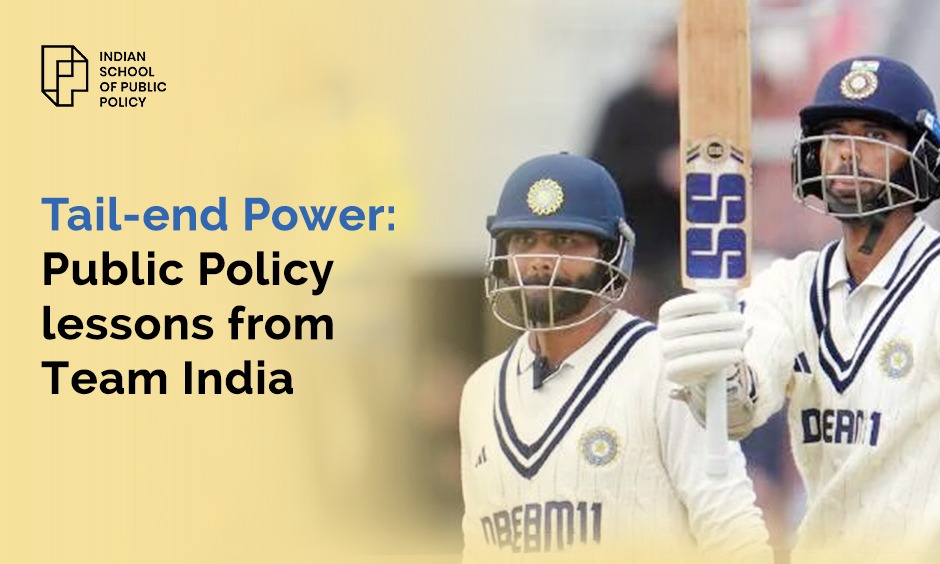Table of Contents
Tail-end Power: Public Policy lessons from Team India

India’s historic match win and draw of the Cricket Test Series against England at the Oval was made possible by the excellent team effort. Even more interesting was the immense potential shown by the mid-order, and the tail-end batters and grit of the bowlers who bowled relentlessly till the mission was accomplished.
The world is marveling at the seamless and skillful coordination by the Indian team. If one player faltered, the other would immediately fill in for him. Brilliant captaincy by Shubman Gill who gave freedom to all to exercise their skills to the maximum, yet making sure the team stayed focused on the goal.
What are the lessons for policy making?
India has a federal structure but with a tilt towards a unitary system of government, a quasi-federal system. The Union government plays a dominant role in allocation of finances and functions. The local governments have little room to exercise their knowledge and understanding of the local nuances.
Need for Empowering Local Bodies
Eminent jurists and scholars have consistently underlined the need for empowering panchayats and local bodies. The 73rd and the 74th Amendments were enacted in 1992 with the aim to decentralise power but they have hardly been implemented.
Cricket and Governance Parallels
The lessons learnt from good cricketing suggest that while the decisions regarding designing and framing of public policy (like the Captain and the Coaches in test series) can be taken at the Centre, considerable freedom should be given to districts, blocks and villages to implement or execute them.
This should be pursued also because the local bodies know best the local milieu, the local context and people’s views on the desirability and implementability of particular policies. Therefore, they can exercise freedom in contextualisation and execution of public policy to suit local needs.
Panchayats as the Backbone of Policy Implementation
Panchayats are vast, agile and adaptable and can serve as the base of a strong pyramid. Just like the tail-enders in cricket series, their strength will ensure stability and resilience, led by Sarpanches aware of the local environment.
Consistent nurturing through technology, fiscal support and digitization of records will encourage them. The ‘National Panchayat Awards’ for the best Sarpanches across various categories– for their efforts in poverty alleviation, health, child welfare, infrastructure, governance, and women empowerment, etc–is a good place to start.
The Panchayats need to stay nimble and ready to pivot policies with changing needs as they are the bowlers and the tail-enders in India’s policy making. Just as the Centre can be the captain and coach.
Conclusion
Team India has demonstrated that with proper guidance, coaching and freedom of execution even the most difficult goals can be achieved. Our Panchayats and Sarpanches can do the same for public policy and help win the development match for the country.
Panchayat ke saath sabka vikas!!
Picture Credit: Indianexpress.com



